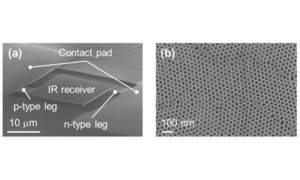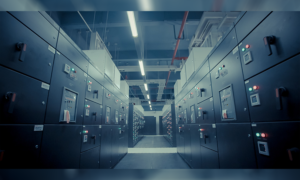The article is based on the discussion of industrial leaders sharing their opinion on cooling technology. With the increasing cooling demand across various industry, the government has become keen to focus on cooling efficiency.
Heating, ventilating and air-conditioning (HVAC) systems play a vital part in ensuring the required comfort levels of residents inside building environments. However, most modern cooling equipments consume high levels of electrical power, thus create high energy consumption rates in buildings. Basic description along with the features and limitations of the techniques are outlined. Comparisons made on the electricity consumption and the capital expenditure has also been proposed.
Air conditioners consume around 40 – 50 percent of total energy. Technologies that are implemented to increase energy efficiency whilst maintaining the temperature.
Daniel Chen, CAREL APAC Marketing Manager – HVAC said “The increased efficiency of CAREL’s air conditioning and refrigeration systems is one of its cornerstones. The main new designs and innovations of HVAC/R technologies in recent years have led to:
- Optimisation of refrigeration systems and circuits;
- Introduction of variable-speed compressors using BLDC technology, facilitating greater efficiency in applications such as heat pumps;
- Specific devices for CO2 refrigerant applications, making the systems more efficient and extending the use of these applications to hotter geographical areas.
In the humidification sector, CAREL focuses on adiabatic humidification, which allows the production of humidity using less energy compared to isothermal humidification. One related application is evaporative cooling, with more efficient temperature control, especially in air handling applications.
The new IoT division has allowed CAREL to concentrate on solutions that allow more evolved system optimisation, alongside the traditional monitoring and alarm management. The latest revisions to the EPBD by the European Commission are clearly aimed at considering automation and control systems as key technologies for achieving an effective reduction in building energy consumption. Not only is it important to lower the need for thermal energy, but it is also essential to identify the building’s profiles of use, in order to match the requirements of the building to those of the systems.”
Whereas for Bhupender Singh, MD, Ravi Integrated Logistics, it was a completely different scenario as he said, “A Cold chain is a temperature-controlled supply chain. The cold chain includes various products such as produce, seafood, frozen food, dairy, floral, chemicals and pharmaceuticals – all of which have specific temperature requirements regarding storage to maintain quality and freshness. Refrigeration systems for a refrigerated facility should be selected in an early stage of planning process. The central compressor room has been accepted standard for larger installations where energy conservation is very important factor, If the facility is separated for different commodities selection of the system type is bit easier. However, if the commodities to be stored require different temperature-humidity conditions, a system must be selected that can meet Mr Kool’s design parameters are mentioned below:
- Controlled atmosphere for long-term vegetable storage
- Coolers at temperatures of 0 degree C and above
- High-temperature freezers at -2 to -3 degree C
- Low-temperature storage rooms for general frozen products, usually maintained at -15 to -25 degree C”
Technologies for comfortable cooling even at extreme temperatures
India is one the world’s largest producer as well as consumer of food products. India is a richly endowed agricultural nation. It has all the major climates of the world.
Dovetailing energy efficiency of Refrigeration and Air conditioning equipment with refrigerant transition will enhance the overall climate benefit.
Singh said, “A large part of the cooling demand is catered through refrigerant based cooling globally across sectors such as cold-chain, refrigeration and reefer transport. Refrigerants used in cooling equipment are regulated under the Montreal Protocol regime. Another important aspect related to refrigerant-based cooling is energy use, resulting in a much larger portion of the emissions – nearly 70 percent. According to the International Energy Agency (IEA), refrigeration and air conditioning (RAC) causes 10 percent of the global CO2 emissions.”
For India’s tropical climatic conditions, one interesting solution is to use units featuring indirect evaporative cooling and at the same time a refrigerant circuit with BLDC compressors. Indirect evaporative cooling can thus provide a reduction in load in order to reduce the cooling capacity delivered, at the same time increasing the efficiency of the compressor, which operates at lower speed.
To support itChen further elaborated, “In particular, indirect evaporative cooling is a very popular way today to reduce energy consumption in data centres, where outside air cannot be introduced: this technique exploits the well-known effect of lowering the temperature through the evaporation of water in a secondary or auxiliary air stream, which then cools the primary air flow via a heat exchanger. In this way, the air inside the server rooms is recirculated and no additional moisture is added, while there is no limitation in the humidity of the secondary air stream, which can even reach saturation, thus maximising the effect.
The overall efficiency of this kind of unit depends on the performance of the individual components: the heart of the system is the heat exchanger and the adiabatic humidifier, both of which Carel can supply”.
Integrated actions have a higher impact than any of the actions taken in isolation integration of energy efficiency and refrigerant transitioning efforts, and adoption of better technology options.
Government’s focus to increase cold storage in India
To which, Eason Cheng, CAREL APAC Marketing Manager – Refrigeration said, “Because of the high cost of fuel to maintain cooling during transit, operating costs are extremely high, normally 3 or 4 times than with electric power from grid.
One way is to improve thermal isolation, as this is the limitation of refrigerated trucks and other vehicles, so as to reach a compromise between load and thermal performance.
The other way is to improve the efficiency of the refrigeration system, applying technologies such as ExVs and BLDC compressors. Replacing TxVs with ExVs can increase the evaporating temperature and maximise operating efficiency, so as dynamically match the load.
To ensure cooling performance during transit, temperature logging devices are required. IoT technology embedded in refrigeration systems will be a trend, especially in the transport cold chain.” Where as in the same market.Singh explained “Mr Kool is a single window solution for all the services related to Supply Chain, logistics & transportation. This year we come up with the Fully Mechanised State of art Cold storage. This facility is well equipped with state of art Infrastructure and team of experts having plentiful experience in handling wide variety of products. In our Warehouse we use Mr Kool Warehouse Management System for controlling and managing deliveries, inventories and costs, which is having following features-
- Chamber wise Temperature Display
- Warehouse Heat Map with ABC Analysis
- Expiry management
- FEFO & FIFO Scheduling
- Category wise, temperature wise put away list generation
- Efficient Inward and Outward Process
- Suggested Location display on Put away and Pick Up List Generation
- 3 tier monitoring system
- Online temperature monitoring
- Barcode tracking Facility
- Highly reliable reefer machines
- WMS software for real time updating”
Smart cooling technologies
Chen said “Carel provides smart data-driven services through our IoT platform. Connectivity in refrigeration 4.0 comes into play throughout the unit’s life cycle, from production to commissioning to the final user, and all of the various players can draw benefits.
IoT means moving from isolated systems to solutions in which the various devices are interconnected and exchange data with each other. The advent of IoT represents a phase that will see a further increase in efficiency levels, and therefore results in terms of cost reductions. This is contributing to greater availability of long-term data relating to energy performance and indoor air quality of buildings. Such data may come from different sources and relate to the total energy performance of the building, systems or components, the energy produced on site from renewable sources, and to the variables that have an influence, including those relating to the behaviour of occupants. The consequence of this trend is an exponential growth in the size and complexity of the databases relating to buildings-systems, which when correctly analysed can lead to the definition of the true performance of the building and optimisation of its operating performance.” And to take it further Singh emphasized in few points mentioned below –
- “Use of RCC roof or other suitable materials with insulation to prevent built up of high temperature inside.
- Increased centre height and more slope for better air circulation and preventing humid micro- climate inside cold storage chambers.
- Providing bottom and side ventilations for free and faster air circulation and to avoid formation of hot and humid pockets between the product packets.
- Thermography cold storage to detect any type of leakage
- Our Operations activities for maintaining the temperatures are as follows-
Vehicle Pre-Checkup- vehicle complete checkup before placing to the customers.
Pre-checkup of product temperature before loading- Product temperature should be maintained before loading by customer side which will be efficient for in transit temperature maintenance.
Driver training & Management- Trained drivers for the different products with different temperature requirement. GPS enabled temperature monitoring – GPS tracking with real time temperature visibility. We have a team of technologically trained, experienced, and dedicated professionals to assure safe shipment of products”.
The advent of IoT represents a phase with a decent increase in efficiency levels, and therefore results in terms of cost reductions.
Daniel Chen, CAREL APAC Marketing Manager – HVAC
One way is to improve thermal isolation, as this is the limitation of refrigerated trucks and other vehicles, so as to reach a compromise between load and thermal performance.
Eason Cheng, CAREL APAC Marketing Manager – Refrigeration
Dovetailing energy efficiency of Refrigeration and Air conditioning equipment with refrigerant transition will enhance the overall climate benefit.
Bhupender Singh, MD, Ravi Integrated Logistics, Mr Kool
Cookie Consent
We use cookies to personalize your experience. By continuing to visit this website you agree to our Terms & Conditions, Privacy Policy and Cookie Policy.















